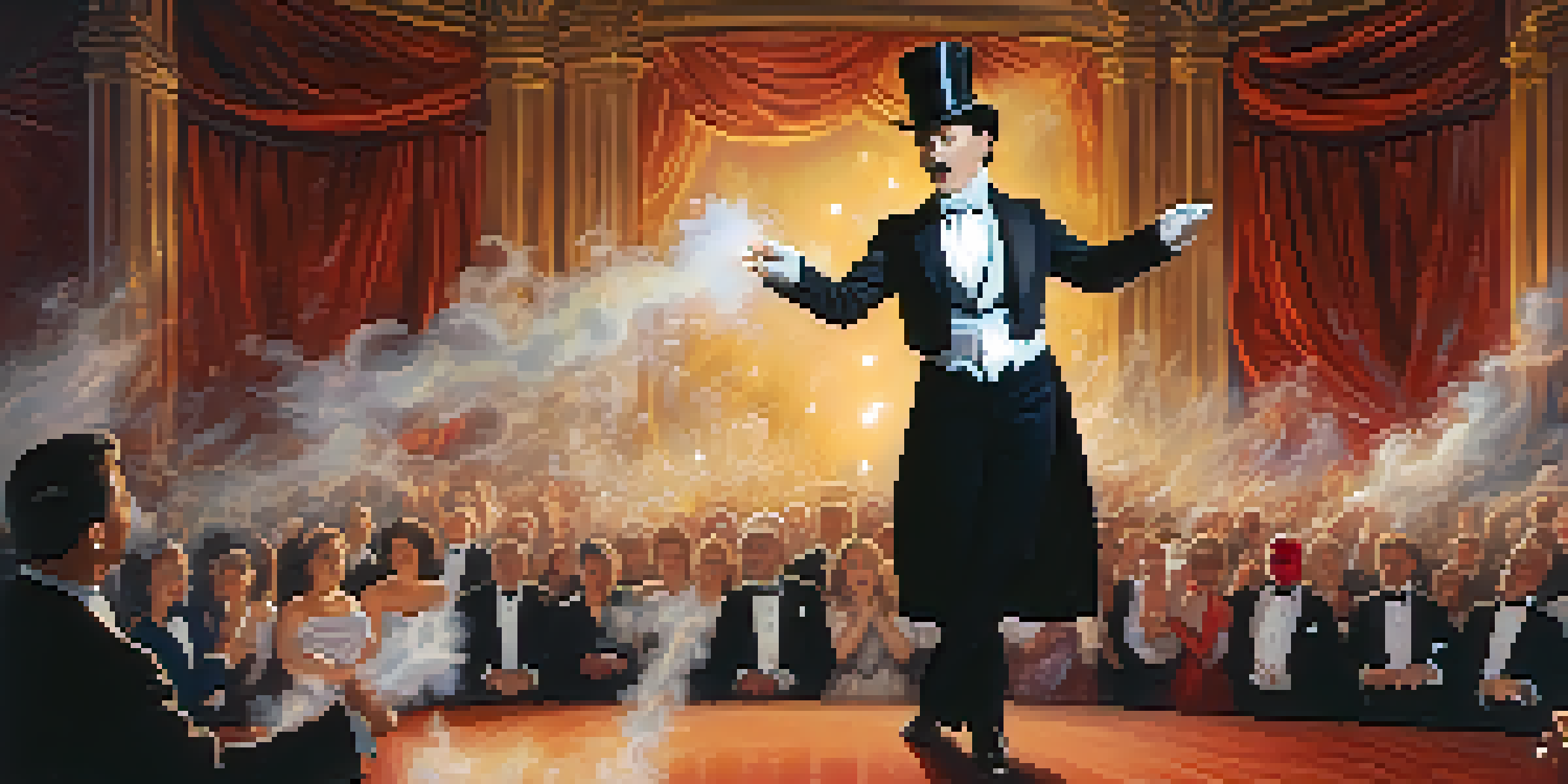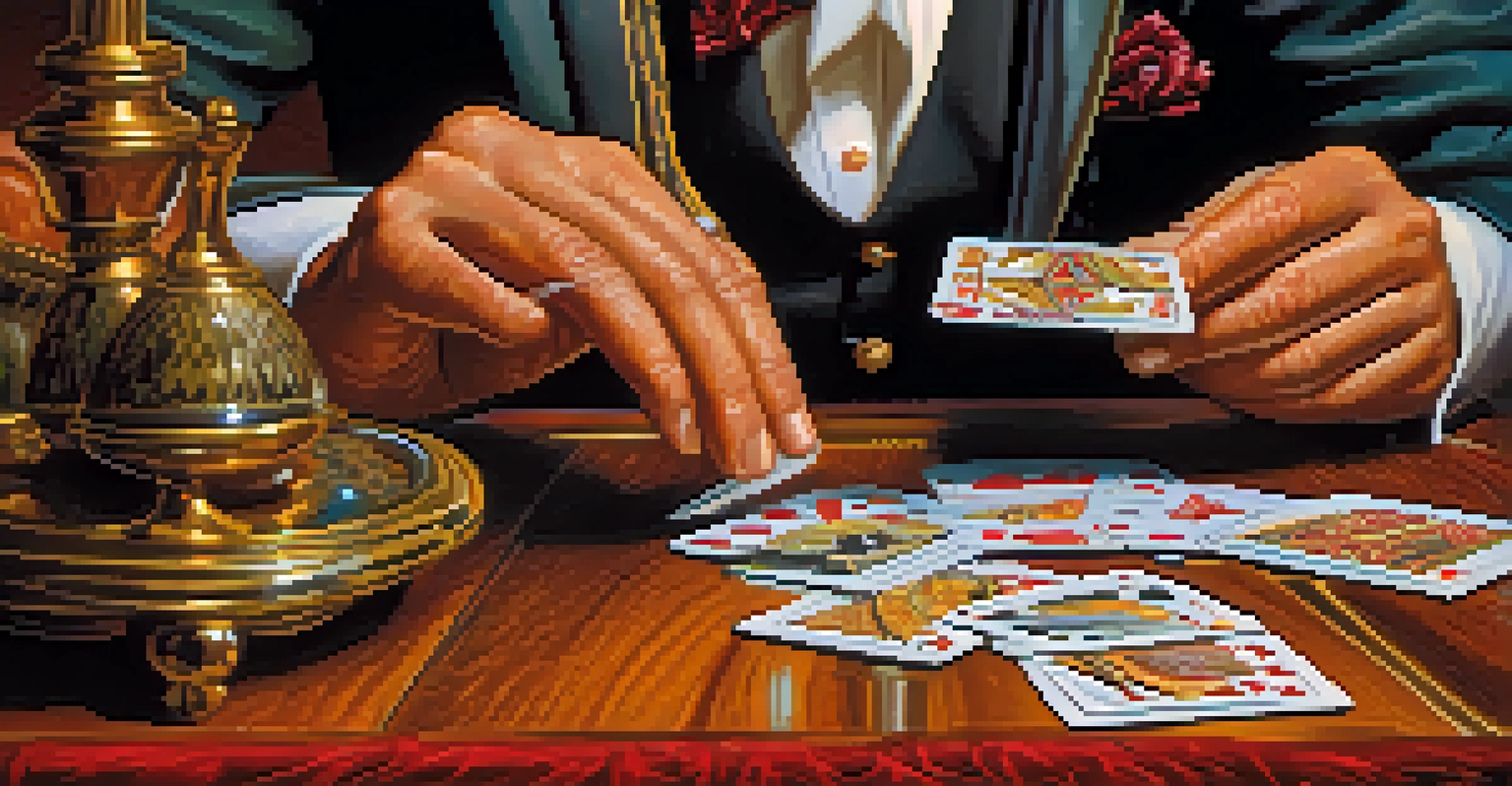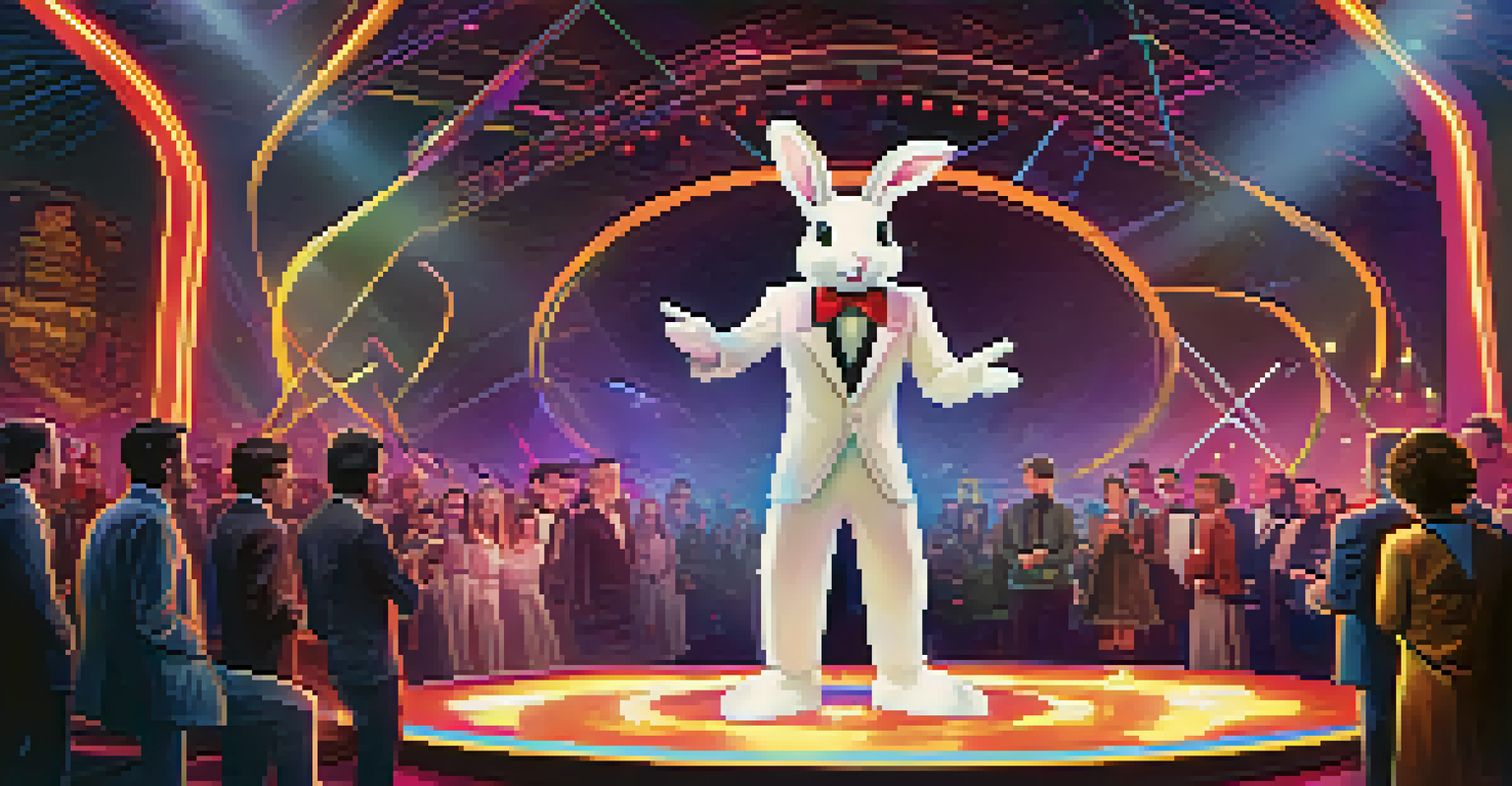The Allure of Magic Shows: Unveiling the Art of Illusion

The History and Evolution of Magic Shows
Magic shows have dazzled audiences for centuries, tracing back to ancient Egypt. The art of illusion began as a form of storytelling, weaving together myth and mystery to captivate the imaginations of those who witnessed it.
The real secret of magic lies in the performance.
Over the years, magic evolved from street performances to grand theatrical spectacles. Famous magicians like Harry Houdini and David Copperfield transformed the craft into an art form, combining elaborate stage setups with compelling narratives.
Today, magic shows continue to evolve, blending traditional techniques with modern technology. As new generations of magicians emerge, they redefine what it means to be an illusionist, ensuring that the allure of magic remains timeless.
The Psychology Behind the Illusions
At the heart of magic lies a fascinating interplay between perception and reality. Magicians skillfully manipulate our attention, often directing our focus away from the method behind the trick, creating a sense of wonder.

For instance, think of a classic card trick. While you're busy trying to follow the magician's movements, they might be using sleight of hand to make the impossible seem possible. This cognitive distraction is a core element of most illusions.
Magic's Rich Historical Journey
Magic shows have evolved from ancient storytelling in Egypt to modern theatrical performances, showcasing the enduring fascination with illusion.
Understanding this psychological aspect helps us appreciate the depth of magic. It’s not just about what we see but how our brains interpret and react to those visual cues, making each performance a unique experience.
The Role of Storytelling in Magic
Every great magic show tells a story, drawing the audience into a narrative filled with suspense and surprise. Storytelling enhances the emotional connection between the magician and the spectators, making the experience more memorable.
Magic is the only art that can be practiced without a license.
Consider how a magician might introduce a trick: they often weave in personal anecdotes or dramatic flair that adds layers to the performance. This narrative context amplifies the impact of the illusion, transforming a simple trick into an unforgettable moment.
In essence, storytelling is the thread that ties together the various acts of a magic show. It invites the audience to engage not just with the tricks but with the emotions and themes that resonate throughout the performance.
The Importance of Showmanship in Magic
Showmanship is the lifeblood of any successful magic performance. A skilled magician knows that technical proficiency alone won't captivate an audience; it's the charisma and stage presence that truly enchants.
Think of magicians like Penn and Teller, who blend humor with their tricks, making each performance not just about the illusion but also about entertainment. Their unique personalities shine through, ensuring that audiences are not only amazed but also amused.
Psychology Fuels Illusions
The interplay between perception and reality is central to magic, as magicians expertly direct our attention to create wonder.
Ultimately, showmanship transforms a magic act from a simple demonstration into a theatrical experience. It's this blend of skill and performance that leaves audiences on the edge of their seats, eagerly awaiting the next surprise.
The Art of Misleading: Techniques of Misdirection
Misdirection is a magician's most powerful tool, allowing them to control what the audience sees and thinks. By diverting attention at just the right moment, they can perform seemingly impossible feats.
For example, a magician might engage the audience with a captivating story while subtly executing the mechanics of a trick. This clever distraction ensures that the audience’s focus remains on the narrative rather than the method.
Understanding misdirection can deepen your appreciation for magic. It’s a brilliant dance between what is seen and what is hidden, illustrating the cleverness and creativity that go into crafting each illusion.
Modern Innovations in Magic Performances
As technology advances, so too does the world of magic. Modern magicians are now incorporating elements like augmented reality and sophisticated stage effects to enhance their performances.
Imagine a magician who can make objects appear and disappear using holograms or digital projections. These innovations not only astonish audiences but also expand the possibilities of what magic can achieve.
Storytelling Enhances Magic
Narratives woven into magic performances deepen the emotional connection with the audience, transforming simple tricks into memorable experiences.
Yet, even with these advancements, the core principles of magic remain unchanged. It’s the blend of tradition and innovation that keeps magic fresh and exciting, ensuring that it continues to captivate audiences of all ages.
The Universal Appeal of Magic Shows
Magic shows have a unique ability to transcend cultural and language barriers, making them universally appealing. Regardless of age or background, the thrill of witnessing the impossible connects people in a shared experience.
This universal allure often stems from our innate curiosity and desire to understand the unknown. Magic invites us to question reality, sparking wonder and imagination that resonates deeply within us.

Ultimately, the magic show is more than just a performance; it's an exploration of human creativity and the limitless possibilities of the imagination. It’s an invitation to believe in the extraordinary and to embrace the joy of wonder.